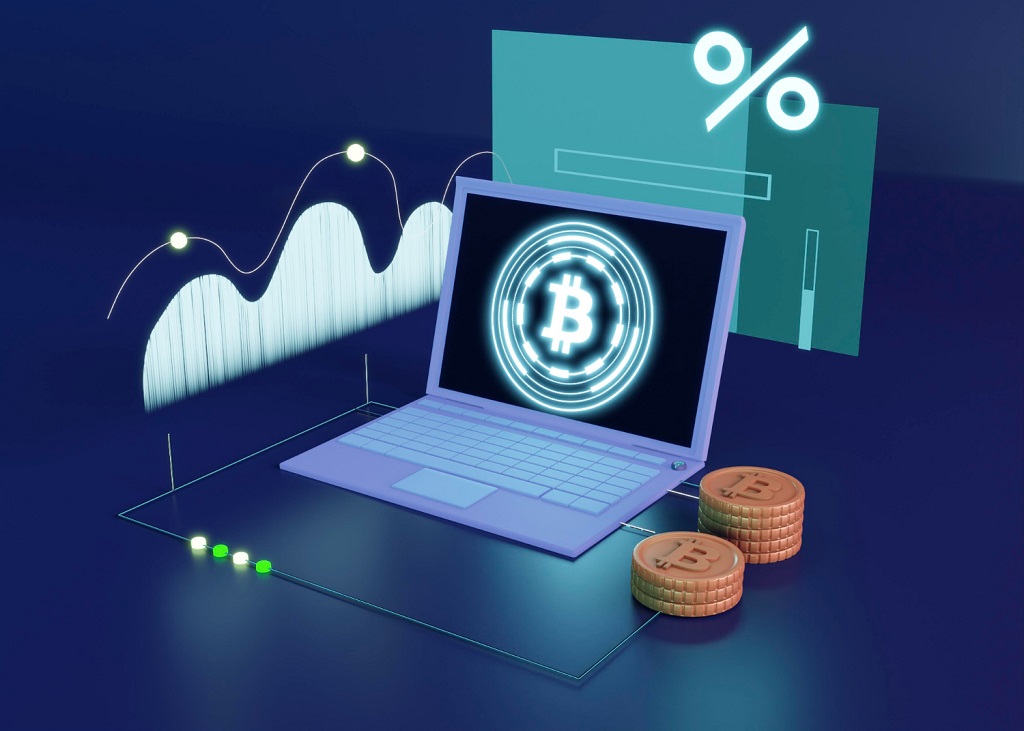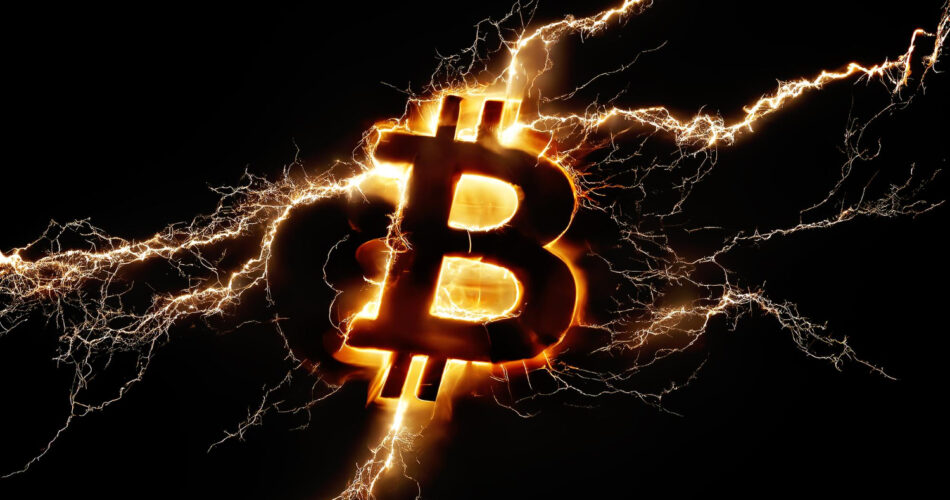In the rapidly evolving world of cryptocurrency, one term that has been making waves is the “Flash Loan”. This innovative concept is reshaping the crypto landscape, offering unique opportunities and challenges. But what exactly is a Flash Loan? How does it work, and why is it so significant in the crypto world? Let’s delve into these questions and more.
Table of Contents
What are Flash Loans?
In the world of decentralized finance (DeFi), Flash Loans have emerged as a novel and powerful financial tool. But what exactly are they? Let’s delve into the details.
Definition of Flash Loans
A Flash Loan is a unique feature in the DeFi sector that allows users to borrow a certain amount of cryptocurrency with no upfront collateral. This is a stark contrast to traditional crypto loans, which typically require collateral as a form of security.
Brief History and Origin of Flash Loans
The concept of Flash Loans was first introduced by the DeFi platform Aave in 2020. The idea quickly gained traction due to its innovative approach to lending and borrowing, offering opportunities that were previously unheard of in both traditional finance and cryptocurrency sectors.
Flash Loans vs Traditional Loans
| Flash Loans | Traditional Loans | |
|---|---|---|
| Definition | A feature in the DeFi sector that allows users to borrow cryptocurrency without collateral, provided the loan is returned within the same transaction block. | A contractual agreement where a borrower receives something of value now and agrees to repay the lender at a later date, typically with interest. |
| Collateral Required | No | Yes |
| Credit Checks | No | Yes |
| Approval Process | Instant, as long as the loan is repaid within the same transaction block. | Can be lengthy, involving credit checks and verification processes. |
| Loan Duration | Extremely short (within a single transaction block, typically a few seconds). | Can range from short-term (a few months) to long-term (several years). |
| Use Cases | Arbitrage, self-liquidation, collateral swapping, etc. | Buying a home or car, starting a business, consolidating debt, etc. |
| Risks | Smart contract bugs, Flash Loan attacks, market manipulation. | Default risk, interest rate risk, prepayment risk, etc. |
Traditional loans usually involve a lengthy process of credit checks, approval processes, and collateral. Flash Loans, on the other hand, bypass all these steps. The only condition is that the loan must be returned within the same transaction block, which typically lasts only a few seconds. If the loan is not repaid within this timeframe, the whole transaction is reversed as if it never happened, ensuring the lender’s funds are safe.
This unique feature allows for a variety of innovative use cases, such as arbitrage opportunities, self-liquidation, and collateral swapping. However, it also comes with its own set of risks and challenges, which we’ll explore in later sections.
How Do Flash Loans Work?

Mechanics of Flash Loans
Flash Loans operate on the principle of atomic transactions. In computer science, an atomic transaction is an indivisible and irreducible series of operations, all of which must occur for the transaction to be successful. If any operation fails, the entire transaction fails, and the system reverts to its original state.
In the context of Flash Loans, this means that the borrowing and repayment of the loan must occur within the same transaction block. If the borrower fails to repay the loan within this block, the transaction is reversed, as if it never happened. This ensures that the lender’s funds are safe, even without requiring collateral from the borrower.
Role of Smart Contracts in Flash Loans
Smart contracts play a crucial role in Flash Loans. These are self-executing contracts with the terms of the agreement directly written into code. In a Flash Loan, the smart contract enforces the loan agreement, ensuring that the loan is repaid within the same block, or the transaction is reversed.
Here’s a simplified step-by-step process of how a Flash Loan works:
- The borrower sends a transaction to the smart contract of the DeFi platform, requesting a Flash Loan.
- The smart contract checks if the platform has sufficient liquidity to fulfill the loan request.
- If sufficient liquidity is available, the smart contract releases the funds to the borrower.
- The borrower uses the funds for their intended purpose (e.g., arbitrage, collateral swapping).
- Before the end of the transaction block, the borrower repays the loan along with a small fee.
- If the borrower fails to repay the loan within the same block, the smart contract reverses the entire transaction.
Platforms Offering Flash Loans
| Platform | Markets Available | Pros | Cons |
|---|---|---|---|
| Aave | Ethereum, Avalanche, Optimism, Polygon, Arbitrum, Metis | Aave is the pioneer of Flash Loans and has a large liquidity pool. It supports a wide range of cryptocurrencies and is known for its strong security measures. | The platform’s fee structure may be complex for beginners. |
| Compound | USDC, Ethereum, Bitcoin, Compound, Uniswap, Chainlink | Compound is known for its user-friendly interface and transparent operations. It also offers a variety of other DeFi services in addition to Flash Loans. | – |
| Equalizer Finance | Ethereum, Binance Smart Chain, Polygon, Optimism | Low fees, multi-chain solution | New platform, market volatility of native token |
Use Cases of Flash Loans
Flash Loans, with their unique features, have opened up a plethora of opportunities in the DeFi space. Here, we delve into some of the most common use cases of Flash Loans.
Arbitrage Opportunities
Arbitrage is the practice of taking advantage of price differences between different markets. In the context of Flash Loans, users can borrow funds to exploit these discrepancies in token prices across various exchanges. For instance, if a token is cheaper on Exchange A than Exchange B, a user can use a Flash Loan to buy the token on Exchange A and sell it on Exchange B for a profit, all within the same transaction block. The loan is then repaid, and the user keeps the profit, all without risking their own capital.
Self-Liquidation
In DeFi, if the value of the collateral falls below a certain threshold, the loan becomes under-collateralized and can be liquidated. Flash Loans can help avoid this situation. If a user’s loan is about to be liquidated, they can take a Flash Loan, repay their original loan, and prevent liquidation. After that, they can re-collateralize their position at a more favorable rate.
Collateral Swapping
Collateral swapping involves changing the type of collateral for a loan without closing the position. With Flash Loans, users can borrow funds to repay their original loan, swap their collateral for a different asset, and then take out a new loan with the new collateral. This can be beneficial if the user anticipates a price drop in their current collateral asset and wants to switch to a more stable asset.
Real-World Examples of Each Use Case
- Arbitrage: In February 2020, an anonymous user made a profit of $350,000 in a single transaction using a Flash Loan for arbitrage between the DeFi platforms Synthetix and Uniswap.
- Self-Liquidation: In March 2020, during the “Black Thursday” market crash, several savvy users used Flash Loans to avoid liquidation of their positions.
- Collateral Swapping: While specific real-world examples are harder to come by due to the anonymity of blockchain transactions, collateral swapping is a common practice among DeFi users who want to manage their risk and exposure to volatile assets.
Risks and Challenges of Flash Loans

While Flash Loans offer unique opportunities, they also come with their own set of risks and challenges. Let’s delve into some of these.
Risk of Smart Contract Bugs
Flash Loans rely heavily on smart contracts, which are self-executing contracts with the terms of the agreement directly written into code. While this automation brings efficiency, it also introduces the risk of bugs in the contract code. If a bug exists, it could be exploited by malicious actors, leading to significant financial losses.
Flash Loan Attacks
Flash Loan attacks have emerged as a significant concern in the DeFi space. These attacks exploit the unique features of Flash Loans for malicious purposes, often leading to substantial financial losses. Let’s delve into what these attacks are and how they work.
Understanding Flash Loan Attacks
A Flash Loan attack is a type of exploit in which a malicious actor uses a Flash Loan to manipulate market conditions to their advantage. The attacker typically borrows a large amount of cryptocurrency through a Flash Loan, uses it to manipulate the market, and then repays the loan, all within a single transaction block.
How Flash Loan Attacks Work
Here’s a simplified example of how a Flash Loan attack might work:
- The attacker takes out a Flash Loan.
- They use the borrowed funds to manipulate the price of a specific cryptocurrency on a decentralized exchange. This could involve buying up large quantities of the cryptocurrency to artificially inflate its price.
- The attacker then uses another platform to borrow or trade based on the manipulated price.
- Finally, they repay the original Flash Loan and keep the profit.
All of these steps occur within a single transaction block, making it difficult to prevent or reverse the attack.
Notable Flash Loan Attacks
One of the most notable Flash Loan attacks occurred in 2020 against the bZx platform (original website is not existed). The attacker borrowed 10,000 ETH through a Flash Loan, used it to manipulate the price of a specific token on a decentralized exchange, and then made a substantial profit through trades based on the manipulated price. The attacker was able to walk away with around $350,000 in profit, all within a single transaction.
Mitigating Flash Loan Attacks
Preventing Flash Loan attacks is a complex challenge. Some potential solutions include using multiple price oracles to prevent price manipulation, setting limits on Flash Loan amounts, and conducting regular security audits to identify potential vulnerabilities. However, as long as Flash Loans exist, the risk of Flash Loan attacks will likely remain a concern in the DeFi space.
Market Manipulation
Given the large amounts that can be borrowed through Flash Loans, there’s a risk of market manipulation. An actor could borrow a large amount of a specific cryptocurrency, causing its price to artificially inflate. They could then sell off the borrowed amount at the inflated price and repay the loan, making a profit in the process.
Regulatory Challenges
The regulatory landscape for Flash Loans is still unclear, as is the case with many aspects of the crypto world. As Flash Loans continue to grow in popularity, they may attract more regulatory scrutiny, which could impact their usage and development.
Mitigating the Risks
To mitigate these risks, it’s crucial to have robust security measures in place. Regular audits of smart contract code can help identify and fix potential bugs. Additionally, platforms can implement measures to prevent price manipulation, such as using multiple price oracles or setting limits on loan amounts.
The Future of Flash Loans
Flash Loans, despite being a relatively new concept, have already made a significant impact in the DeFi space. As we look towards the future, there are several trends and potential developments that could shape the trajectory of Flash Loans.
Increasing Popularity and Adoption
As more people become aware of the potential of Flash Loans, we can expect to see an increase in their usage. This could lead to more platforms offering Flash Loans, more innovative use cases, and an overall growth in the Flash Loan market.
Technological Innovations
The DeFi space is known for its rapid pace of innovation, and Flash Loans are no exception. We can expect to see new technological developments that enhance the functionality and security of Flash Loans. For instance, improvements in smart contract technology could make Flash Loans more secure and efficient.
Regulatory Developments
As Flash Loans continue to grow in popularity, they are likely to attract more attention from regulators. This could lead to new regulations that impact how Flash Loans are used and operated. While this could pose challenges, it could also lead to increased transparency and security in the Flash Loan market.
Integration with Traditional Finance
One exciting possibility for the future of Flash Loans is their integration with traditional finance. By bridging the gap between traditional finance and DeFi, Flash Loans could open up new opportunities for lending and borrowing. This could potentially disrupt traditional financial institutions and reshape the global financial landscape.
Conclusion
Flash Loans represent a significant innovation in the DeFi space, offering unique opportunities for users while also posing new challenges for the industry. By allowing users to borrow large amounts of cryptocurrency without collateral, Flash Loans have opened up a plethora of possibilities, from arbitrage opportunities to collateral swapping.
However, as with any financial tool, Flash Loans come with their own set of risks. These include the potential for Flash Loan attacks, market manipulation, and the inherent risks associated with smart contract bugs. As such, it’s crucial for users to understand these risks and take appropriate measures to mitigate them.
Despite these challenges, the future of Flash Loans looks promising. With ongoing technological innovations, increasing adoption, and potential regulatory developments, Flash Loans are poised to play a significant role in the future of DeFi and potentially even traditional finance.
In conclusion, whether you’re a seasoned crypto enthusiast or a curious newcomer, Flash Loans are a fascinating area to explore. As we continue to delve into the potential of DeFi, it’s clear that Flash Loans, with their unique features and potential, will be a key part of the conversation.
FAQs
What is a Flash Loan?
A Flash Loan is a feature in the DeFi sector that allows users to borrow cryptocurrency without collateral, provided the loan is returned within the same transaction block.
How do Flash Loans work?
Flash Loans work on the principle of atomic transactions. If the borrower fails to repay the loan within the same block, the transaction is reversed to prevent loss.
What are some use cases of Flash Loans?
Flash Loans have several use cases, including arbitrage opportunities, self-liquidation, and collateral swapping.
What are the risks associated with Flash Loans?
While Flash Loans offer unique opportunities, they also come with risks, such as the potential for Flash Loan attacks.


